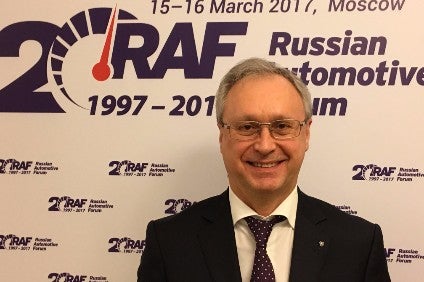
GAZ Group says it is looking to achieve 50% of its revenue being accounted for in the export field by 2022.
The Russian Machines-owned Group has embarked on a blizzard of model launches and upgrades in the past few years in a bid to escape the moribund performance of the domestic market and sell more overseas, although news at home is now looking far healthier.
“We have identified key markets we believe should focus [on] where we can work effectively,” said GAZ Group president, Vadim Sorokin at the recent Russian Automotive Forum organised by Adam Smith Conferences in Moscow.
“We understand many of these markets are protected by customs tariffs – in some instances reaching 80%. The way to reach these markets is to set up local assembly facilities to adapt to local legislation using local components. I keep saying, Russia is a big country, but it is not big enough for us.
“Our target by 2022 is to [have] 50% of our revenue in GAZ Group from exports and we should increase the number of export markets to 93. Iraq, Syria, Ghana, Nigeria, Cambodia, Brazil, Asia and so on are our target markets. Of course we adapt our vehicles to the needs of the markets.”
GAZ enjoys a virtual monopoly on bus supply in the Russian market, accounting for 99% of vehicles in the country, while its share of LCVs domestically is around 50%, with 70% in the medium-duty trucks segment.

US Tariffs are shifting - will you react or anticipate?
Don’t let policy changes catch you off guard. Stay proactive with real-time data and expert analysis.
By GlobalDataComponents are also a key element of GAZ business with the company producing around 80% of all engines in Russia, including river boats and diesel trains. GAZ is also entering the electric bus field with vehicles capable of running for 220km per day and charged overnight, while its next generation model will see a 300km range capable of being recharged in 20-25 minutes.
Development of electric vehicles is more challenging for the Russian market as the country is subject to some of the most extreme climactic conditions on earth.
“There will be [a] need to increase infrastructure, especially in Russia at -25C; 80% of the battery is used to heat up the vehicle, only 20% is used to move the vehicle,” added Sorokin. “Any engine – if you convert to CNG – it would improve the environmental performance by one grade.
“In this country we have huge resources of natural gas. What limits development of CNG vehicles today is lack of filling station infrastructure.
[Also, for Evs] “What you are not taking into account [is] the environmental impact when manufacturing batteries, when generating electricity and disposal of the battery.”


